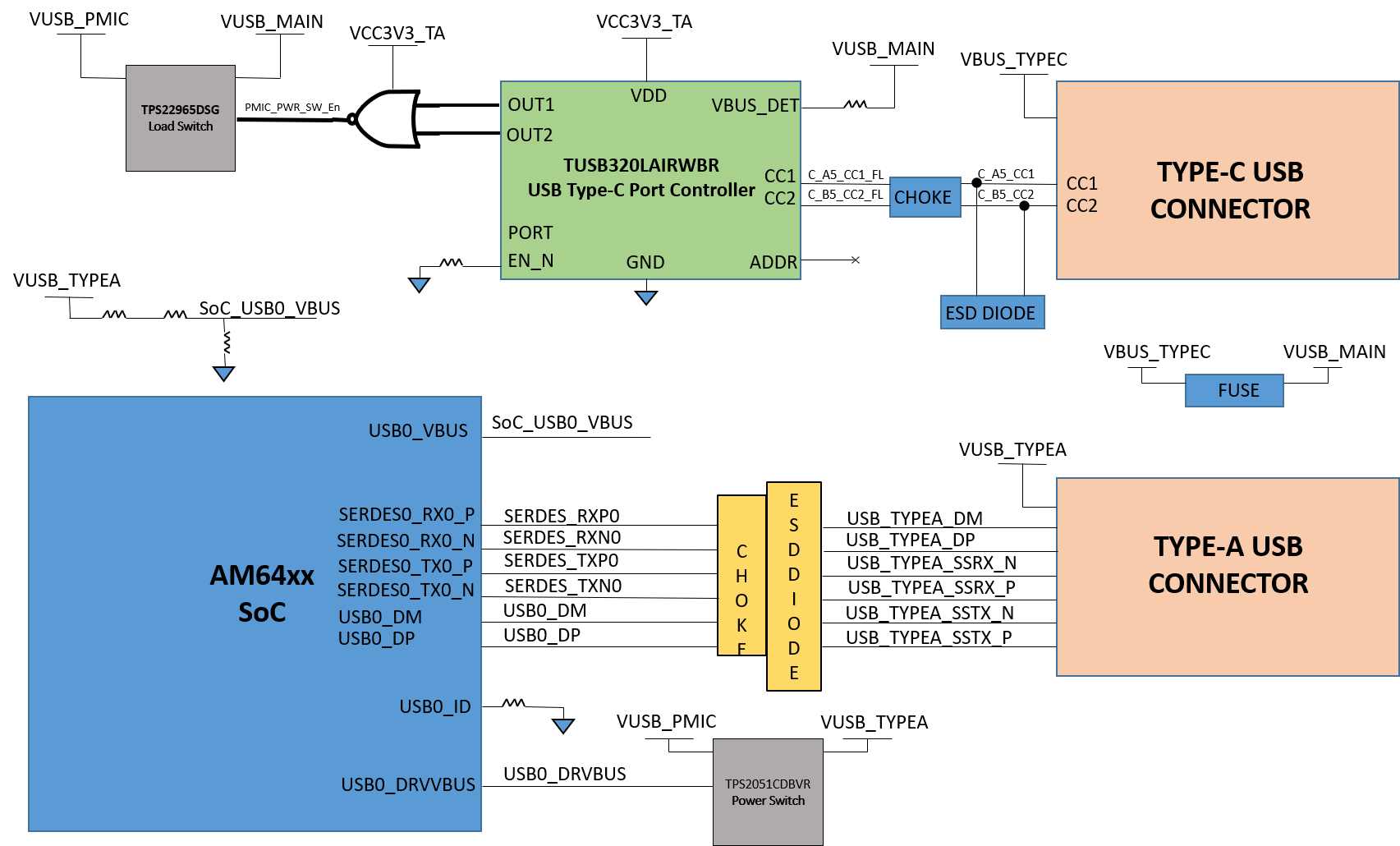SPRUJ64 September 2022
- Abstract
- Trademarks
- 1Key Features
- 2AM64x SKEVM Overview
- 3Functional Block Diagram
-
4System Description
- 4.1 Clocking
- 4.2 Reset
- 4.3 Power Requirements
- 4.4 Configuration
- 4.5 JTAG
- 4.6 Test Automation
- 4.7 UART Interface
- 4.8 Memory Interfaces
- 4.9 Ethernet Interface
- 4.10 USB 3.0 Interface
- 4.11 PRU Connector
- 4.12 User Expansion Connector
- 4.13 MCU Connector
- 4.14 Interrupt
- 4.15 I2C Interface
- 4.16 IO Expander (GPIOs)
- 5Known Issues and Modifications
- 6Revision History
4.10 USB 3.0 Interface
On the AM64x SKEVM, USB 3.0 HOST interface is offered through USB Type-A Connector (692121030100) which supports a data rate up to 5Gbps. Super-speed differential signals from the Type-A connector are connected to the SERDES-0 block of the SoC through a choke and ESD protection device. USB2.0 Lines of the Type-A connector are directly interfaced to the USB0 port of the AM64x SOC. USB0_DRVVBUS from the SoC enables the 5-V power switch to provide VUSB_TYPEA supply used for the USB Type-A connector.
An ESD protection device meeting the USB 3.0 speed and capacitance specification is included on all USB3.0 Lines (TX_P, RX_P, TX_N, and RX_N) to dissipate ESD strikes. A common mode choke on USB data lines is provided for EMI/EMC. An ESD protection device with part number TPD4S012 is included to dissipate ESD strikes on USB2.0 DP/DM signals.
 Figure 4-17 USB 3.0 Host
Interface
Figure 4-17 USB 3.0 Host
Interface